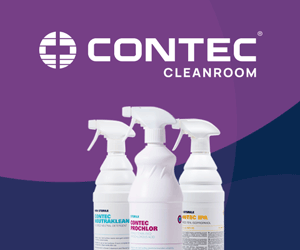Wipe study on disinfection of flexible nasendoscopes
The efficacy study on Tristel Wipes was revealed at the Hospital Hygiene Congress in Berlin
The results of a clinical study using a Tristel Wipes system were revealed in a presentation at last month’s 11th Congress for German Hospital Hygiene in Berlin.
Presented at the Congress by Brandon Hitchcock FRACS, Consultant Ear, Nose and Throat surgeon Tauranga Hospital, New Zealand, the study compared the effectiveness of the high-level disinfectants Tristel Wipes, Cidex OPA (Johnson & Johnson) and Perasafe (Du Pont) for use with flexible nasendoscopes. It involved 195 patients.
The study concluded that none of the disinfectant agents proved harmful to patients. However, in terms of ease of use and user safety, the Tristel Wipes were statistically superior to the other two disinfection methods, using "certain well-recognised scoring measures".
The Tristel Wipes System achieved the fastest turnaround time for the instrument disinfected (2.7min versus 27.4min for Cidex OPA) and eliminated any requirement for capital expenditure, making its use superior as measured by the economic cost end-point.
The Tristel Wipes system uses patented chlorine dioxide chemistry and is designed specifically for the decontamination of heat-sensitive, non-lumened instruments. The system comprises a pre-clean wipe to remove surface soiling, a sporicidal wipe that kills harmful organisms within 30 seconds, and a rinse wipe.
Tristel ceo, Paul Swinney, said: "This is the second in-use clinical study that has demonstrated the superiority of a Tristel instrument disinfectant (in this case the Wipes System) over other, longer-established methods’.




